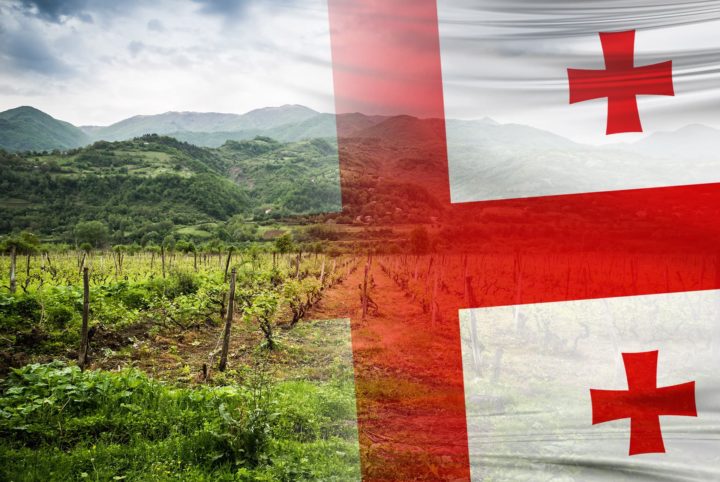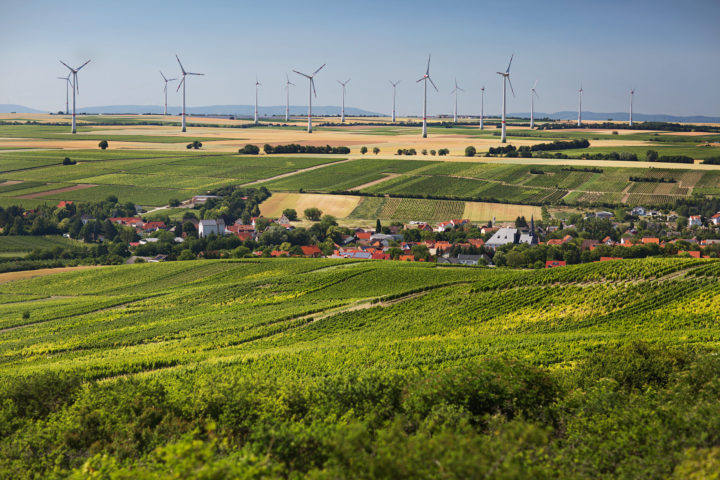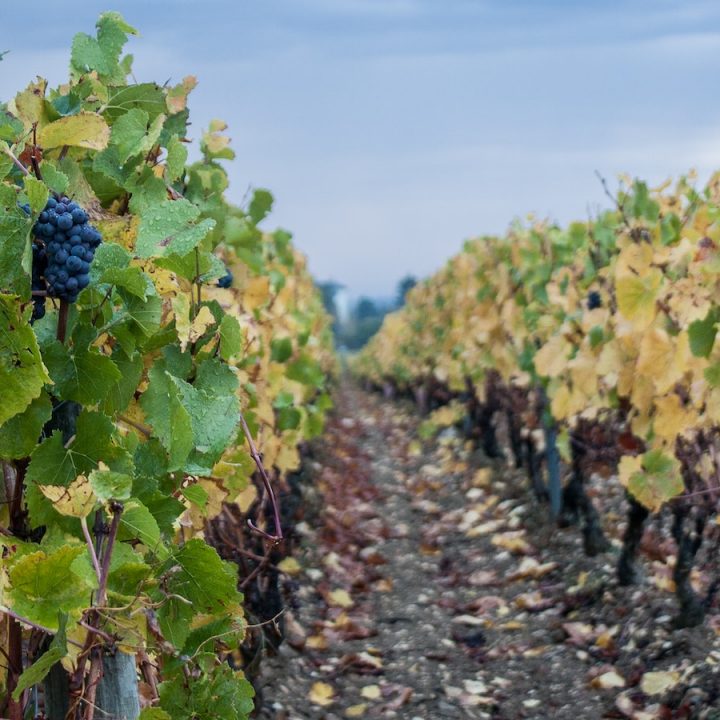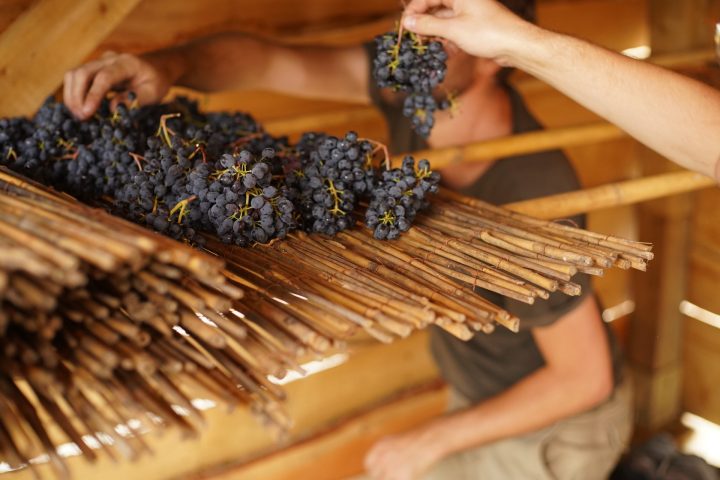Everyone is well aware that wine is a stimulant containing alcohol. At up to 16.5%, alcohol is the second-largest component after water. But why do white wines often have significantly less alcohol than red wines and how dangerous is the alcohol content in wine for the wine drinker? Continue reading the article now and learn interesting facts about the alcohol in wine.
How the alcohol in wine is formed
The alcohol content in wine is created by the process of fermentation. In this process, yeast cultures metabolize the sugar in the must, or mash, into the two components alcohol and carbon dioxide. Today, purchased pure culture yeasts are often used for fermentation. They are specially cultivated yeast cultures. For the winemaker, these purchased yeasts offer an enormous advantage: they are very predictable in their fermentation process and alcohol resistance and do not release unwanted flavors into the wine.
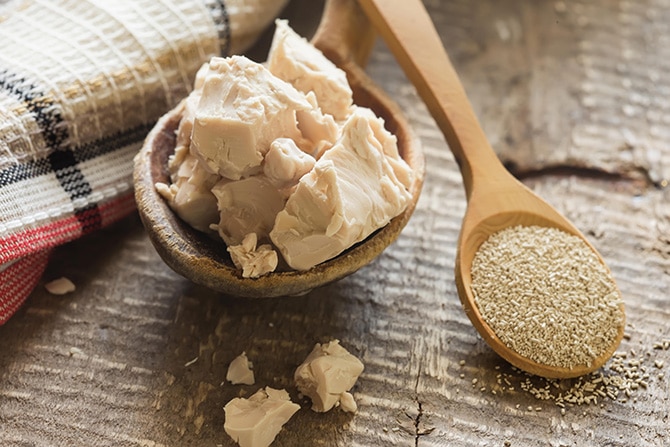
On the other hand, there are the wild vineyard yeasts. These are found on the skins of the grapes and vary from vineyard to vineyard. These yeast cultures ensure that the must ferments even without the addition of pure culture yeasts – this process is called spontaneous fermentation.
The different types of alcohol in wine
Not all alcohol is the same. When we commonly speak of the alcohol content of wine, we usually mean ethanol (also ethyl alcohol), which is also known as potable alcohol. This makes up the largest part of the alcohols present in wine and is formed during the metabolism of carbohydrate-containing material by yeast cultures.
Methyl alcohol is also found in small quantities in wine. Since this type of alcohol is mainly produced by the splitting of plant pectins (plant solids), the longer the must has been on the mash, the higher its content. For this reason, red wines usually have a significantly higher proportion of methyl alcohol than white wines, as the latter do not usually undergo mash fermentation. The higher proportion of methyl alcohol is one of the reasons why red wines generally have a higher total alcohol content than white wines.
The last group consists of the polyhydric alcohols. They occur only in minute quantities in wine and are by-products of alcoholic fermentation. They form the smallest group of alcohols found in wine, but their influence on the character of a wine is immense. In wine, it is mainly propane-1,2,3-triol – better known as glycerol.
Percentage of alcohols in wine
| Type of alcohol | Quantity in g/l |
|---|---|
| Ethanol | 70 – 105 |
| Methanol | 0,017 – 0,3 |
| Glycerin | 6,4 – 20 |
| Butylene glycol | ≈ 0,6 |
| Higher alcohols (fusel oils) | 0,1 – 0,3 |
Alcohol content – What it says about the quality of a wine
Alcohol content can be an important quality characteristic of a wine, although the matter is somewhat more complex and should not be considered in isolation.
In dry wines, the alcohol is not only responsible for the intoxicating effect, but significantly for the taste. Many of the aromatic substances present in wine are not soluble or only slightly soluble in water, but dissolve excellently in alcohol. The higher the alcohol content, the more flavors it can potentially dissolve and absorb. In the case of high-quality wines from fully ripe grapes, a slightly higher alcohol content can have a positive influence on the taste, as it has a lot of extract and thus aroma substances that dissolve in the alcohol and which we perceive later.
In addition, alcohol can still be divided into different grades. Ethyl and methyl alcohol have a rather pungent, burning to acrid impression and quickly make a wine seem fizzy. The full-bodied, heavy, sometimes even oily mouthfeel, on the other hand, is provided by the higher-grade alcohols – above all glycerol. Glycerol is formed mainly at the beginning of alcoholic fermentation and is produced mainly by wild vineyard yeasts. For this reason, wines fermented by spontaneous fermentation have a much higher percentage of natural glycerin and a better ratio with the most common type of alcohol in wine, ethanol (ethyl alcohol).
The artificial addition of glycerin is prohibited. In 2008, a scandal rocked the wine world when inspectors in Rheinland-Pflanz found nearly three million liters of wine that had been adulterated with glycerin to make it appear fuller-bodied. The adulterated wine was to be used in Germany for the production of cheap sparkling wine and originally came from Spain. According to the inspectors, the glycerin has already been added to it there.
List of higher alcohols in wine
| Name | Trivial name |
|---|---|
| Propanol-1 | Propanol |
| 2-Methyl-propanol-1 | Isobutyl alcohol |
| 1-Butanol | Butyl alcohol |
| 2-methyl-1-butanol | 2-methyl butyl alcohol |
| 3-methyl-1-butanol | Isopentanol |
| 1-Pentanol | Pentyl alcohol |
| 1-Hexanol | Hexyl alcohol |
| 1-Octanol | Octyl alcohol |
| 2-Phenylethanol | Phenethyl alcohol |
Chaptalization – How winemakers can artificially increase alcohol content
Behind the term chaptalization lies a (partially) permitted, albeit controversial, measure to increase the subsequent alcohol content of the wine by adding sugar. This cellar technique is named after the French chemist and later Minister of Agriculture Jean-Antoine Chaptal.
The measure of dry sugaring served in the 18. and The main purpose of the 19th century was to increase the natural sugar content of the grape must in poor vintages in order to improve the quality of the subsequent wine and ensure the survival of the winegrowers. Since warm temperatures and high solar radiation in particular are responsible for the formation of sugar, people liked to talk about the sun out of the bag.
Due to climate change, chaptalization is no longer necessary today to enhance cold and sunless vintages. Nevertheless, European wine legislation still allows chaptalization, but with restrictions. Today, chapatalizing is primarily used to increase the final alcohol content in wine, as consumers often perceive high alcohol wines to be more premium, full-bodied and aromatic.
German wine law restricts chaptalization more than the EU. In this country, only wines of the quality levels German wine, Landwein and quality wine are allowed to increase their alcohol content by adding sugar. For Prädikat wines (Kabinett, Spätlese, Auslese, Beerenauslese, Trockenbeerenauslese or Eiswein), enrichment of the must is not permitted. At the Association of German Prädikat Winegrowers (V.d.P.), chaptalization is permitted for wines of the “Erstes Gewächs” and “Großes Gewächs” quality levels, provided they are not classified as Prädikat wines.
The extent to which the alcohol content may be increased by enriching the must depends on the wine-growing zone of the wine-growing region. Except for Baden (Zone B), all German wine-growing regions belong to Zone A.
Maximum limits for the total alcohol content due to enrichment
| Maximum limits total alcohol for wine by enrichment | % vol. | g/l |
|---|---|---|
| Wine growing zone A | ||
| Red wines max. | 12,0 | 95 |
| White wines mac. | 11,5 | 91 |
| Wine-growing zone B | ||
| Red wines max. | 12,5 | 99 |
| White wines max. | 12,0 | 95 |
Maximum limits for increasing the alcohol content by enrichment
In addition to the maximum limit for total alcohol by fortification, the wine law also provides for a limit by how many percent by volume the alcohol content of a wine may be increased by fortification.
| Maximum limits for increase in alcohol content | % vol. | g/l |
|---|---|---|
| Wine growing zone A | ||
| Red wines max. | 3,0 | 24 |
| White wines max. | 3,0 | 24 |
| Wine-growing zone B | ||
| Red wines max. | 2,0 | 16 |
| White wines max. | 2,0 | 16 |
Typical alcohol content of wines
| Grape variety of the wine | Alcohol content in % by volume |
|---|---|
| White wines | |
| Riesling | 7,0 – 12,5 |
| Chardonnay | 10 – 13,5 |
| Pinot blanc | 9 – 10,5 |
| Pinot gris | 8,5 – 13,5 |
| Müller-Thurgaz | 9,5 – 13 |
| Sauvignon Blanc | 12 – 13,5 |
| Silvaner | 11 – 13,5 |
| Red wines | |
| Pinot Noir | 12 – 14,5 |
| Cabernet Sauvignon | 11 – 15 |
| Dornfelder | 9 – 13 |
| Syrah / Shiraz | 12,5 – 16 |
| Zweigelt | 11,5 – 14 |
| Blaufränkisch | 12 – 14,5 |
| Malbec / Côt | 12 – 15 |
Alcohol content – How healthy is wine really?
Wine and its effect on health have been the subject of many studies over the past decades – with sometimes very contradictory findings. For example, while Dr. Kari Poikolainen, former WHO expert on alcohol consumption, believes a bottle of wine a day is safe, researchers at Washington University School of Medicine found that just one glass of wine a day increases the risk of premature death by 20 percent. If one looks at other studies, the contradiction shown here does not dissolve at all. There does not seem to be a scientifically undisputed guideline for harmless alcohol consumption so far.
So let’s not fool ourselves: Alcohol is a highly effective nerve and cell poison and has no place in our bodies. Our liver does have the ability to break down alcohol, albeit quite slowly and to a small extent. Through this function, our organism protects itself from naturally occurring alcohol, such as that found in overripe fruit. If our liver could not break it down, it would accumulate in the body and over time lead to alcohol poisoning.
However, to break down the alcohol from just one glass of wine (0.1 l), our liver needs roughly one hour. The exact duration varies from person to person and depends on various factors. Thus, in addition to body size, weight, age and genes, the alcohol content of the drink also plays a role.
Whether it’s wine, beer or liquor – The source of the alcohol is irrelevant. The amount alone determines the duration of the breakdown and the health effects on the body.




